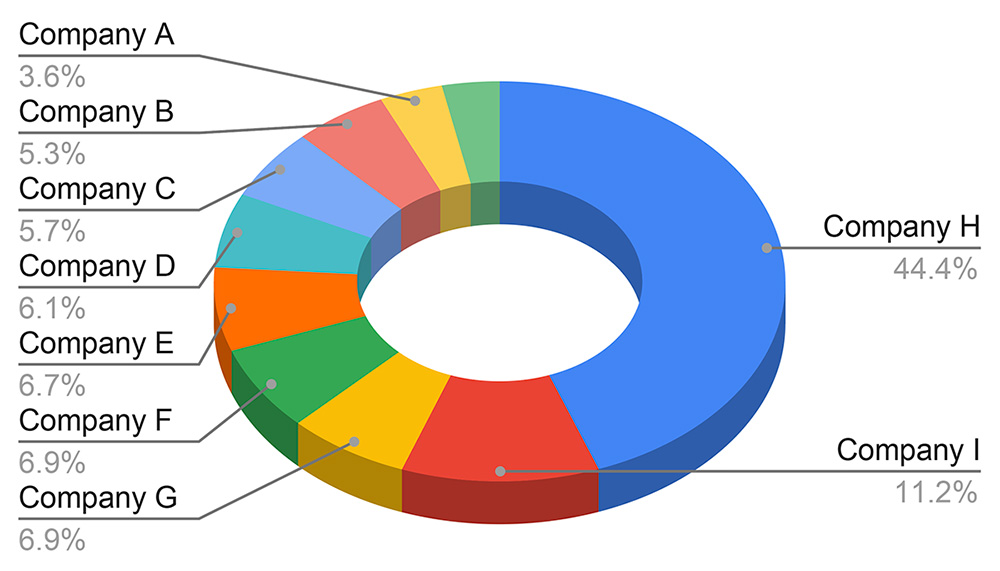
MIG Update – March 17, 2025
Imaging Report Alone Insufficient to Establish Causation
This week, a MIG case where the Tribunal considered the findings on a MRI and the causal relationship to the accident in its determination of whether the Applicant sustained non-minor injuries. The accident was indicated as the reason for the MRI but, the results alone do not serve as a conclusion in the absence of any analysis or medical opinion.
With 1700+ MIG decisions determined by the LAT so far… we provide research support that gives you answers.
Virtual Training – New Sessions Added!

Secure your seat for inHEALTH’s 2025 upcoming Virtual Training sessions!
- BI Fundamentals: March 31- April 4, 2025
- SABS Expedited: May 5-9, 2025
*Eligible Participants receive 9 Substantive – CPD hours upon course completion
Course details & register here +
Factor: Causation
In Rutkovsky v. Certas Home and Auto (22-012260), Nikita Rutkovsky was involved in an accident on June 14, 2019, and sought entitlement to three Treatment Plans for physiotherapy and a chiropractic assessment. She sought removal from the MIG based on her physical injuries and chronic pain.
She submitted that she sustained injuries to her neck, lower back and knees, and a disc protrusion at L4-L5 as shown on a February 2021 MRI. She had no pre-accident history, was only 18, and was not expected to have any degenerative changes to her lumbar spine. She relied on family physician Dr. Kuzmina’s CNRs noting chronic pain. She also submitted entitlement to a chronic pain assessment citing Certas’ November 2020 denial letter was non-compliant with s. 38(8) of the Schedule as it did not provide a sufficient medical reason.
Certas argued that Rutkovsky had not established that the L4-L5 disc protrusion was accident-related, or that it fell outside the MIG. Further, it argued that Rutkovsky did not explain why the protrusion did not appear in imaging completed six months post-accident, but was present over a year after the accident after working a physically demanding job. It submitted that its November 2020 denial was a compliant letter that indicated Rutkovsky suffered from a minor injury, did not suffer from a pre-existing condition based on the CNRs, and confirmed that the baker cyst did not prevent recovery within the MIG.
Get Your Stats Report!
inHEALTH’s Statistical Reports provide insights and analysis on the outcomes of Licence Appeal Tribunal (LAT) and court decisions.
Customize success rate reports on any variable relating to disputed AB claims captured in LAT and court decisions!
Decisions By Top 10 Insurers

*Sample Chart
Statistical Report fees are based on the complexity of your data request
Learn More & Get a Quote Here >
The Tribunal found:
-
- There was insufficient evidence that the findings on the MRI report of L4-L5 disc protrusion was caused by the accident. There was no medical opinion establishing the connection. The family doctor Dr. Kuzmina’s January 2021 MRI requisition referencing the accident was a reason for the inquiry, not a conclusion, and there was no evidence Rutkovsky returned to discuss the results.
- The findings within a medical imaging report on its own were insufficient to establish causation. Further, contrary to Rutkovsky’s submission that she had an unremarkable pre-accident medical history, Dr. Kuzmina’s CNRs identified “mild scoliosis-from childhood.” A December 2019 x-ray found mild dextroscoliosis in the mid-lumbar spine with mild disc space narrowing that may have been related to curvature, and Dr. Kuzmina did not comment on the findings in relation to the accident.
- “Although not binding on me, I agree with the respondent’s reasoning in Clements. There is a significant lapse in time between the medical imaging, dated December 10, 2019, and the MRI of February 27, 2021. In between this time, a CNR entry of the applicant’s physiotherapy clinic (name unknown), on May 18, 2020, indicates that the applicant reported that she thinks her low back pain “is more sore than normal because of lifting of heavy boxes at work.” The applicant’s submissions do not explain the lengthy gap in medical imaging. In my view, this evidence, without a medical expert or opinion commenting on its impact to the L4-L5 disc protrusion, makes the allegation that the L4-L5 disc protrusion is related to the subject accident less persuasive.”
- The first complaint of knee pain was 6 months after the subject accident and the family doctor records did not offer an explanation regarding the cause and relationship of the complaint to the accident.
- Rutkovsky was entitled to $2,000.00 for the chronic pain assessment pursuant to s.38(11) because Certas’ November 2020 denial letter was non-compliant with s. 38(8). While the notice letter indicated Rutkovsky injuries fell within the MIG, it did not reference any of the CNRs or information that it considered when rendering its decision and that simply referring to the “clinical notes and records” without providing a single reference was insufficient to allow an unsophisticated person to make an informed decision to accept or dispute the denial. If Certas did not cure its deficient notice prior to the hearing it was liable to pay for the expenses, once incurred, pursuant to Aviva v. Suarez.
Our MIG Monday series discusses the multitude of factors to consider when evaluating a risk position on MIG cases. The Tribunal has ruled on the MIG in 33% of the decisions so far. Each case is nuanced, but with similar factors.
Inform your position & present persuasive arguments. Include an Outcome Analysis Report (OAR) in your case evaluation complete with For/Against cases. Get an OAR!